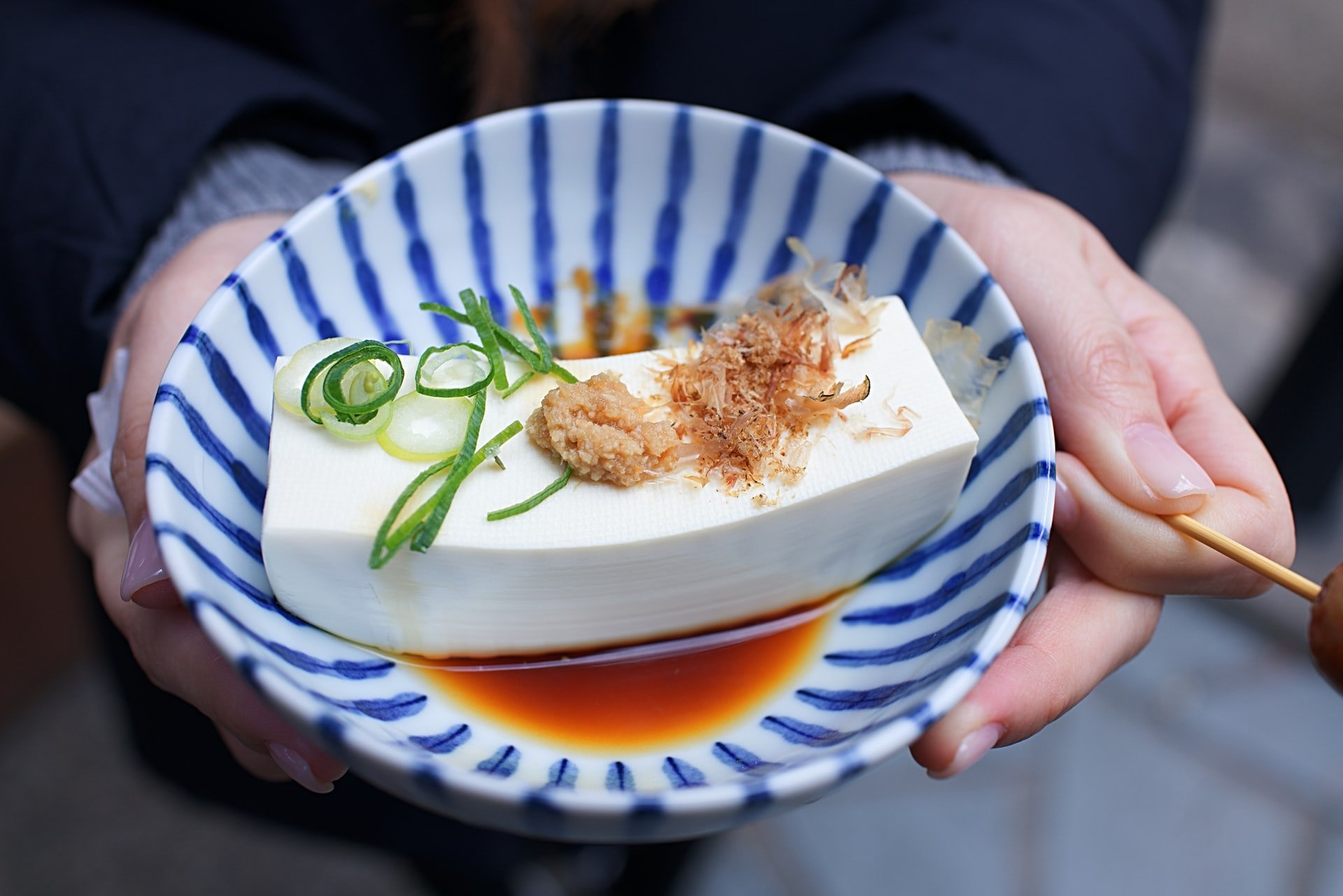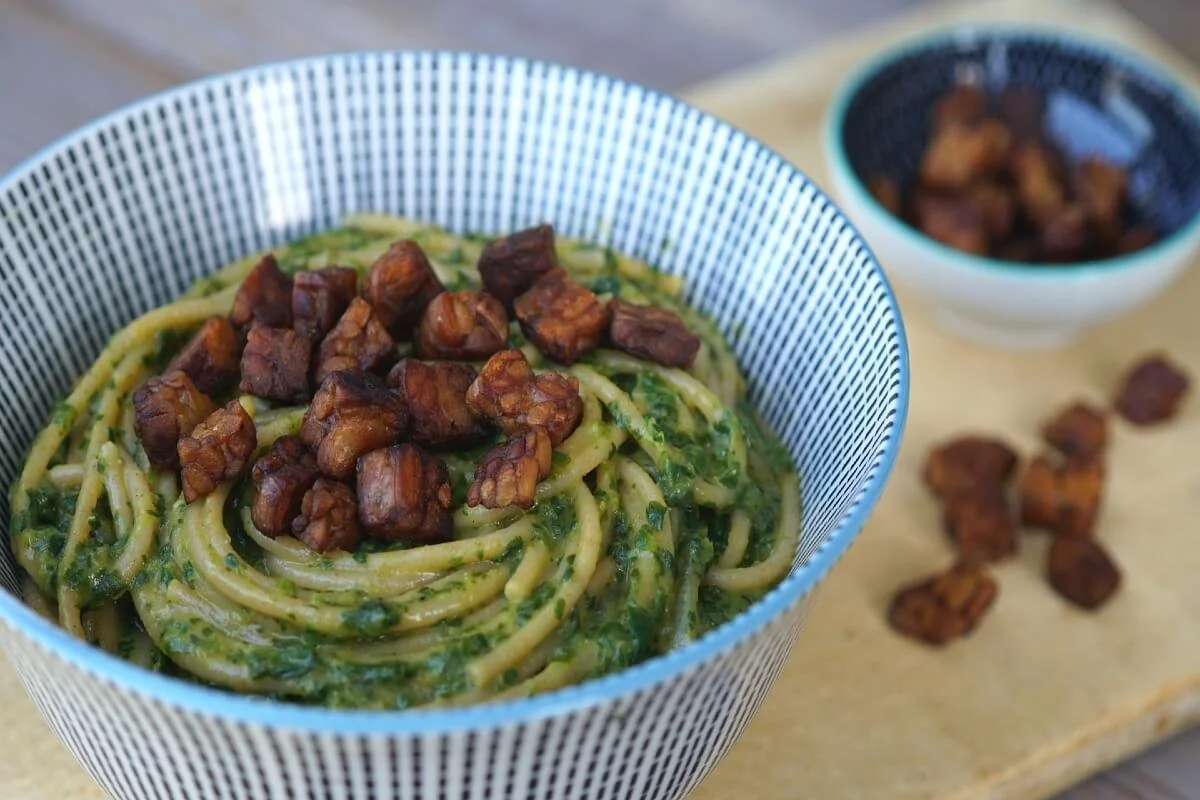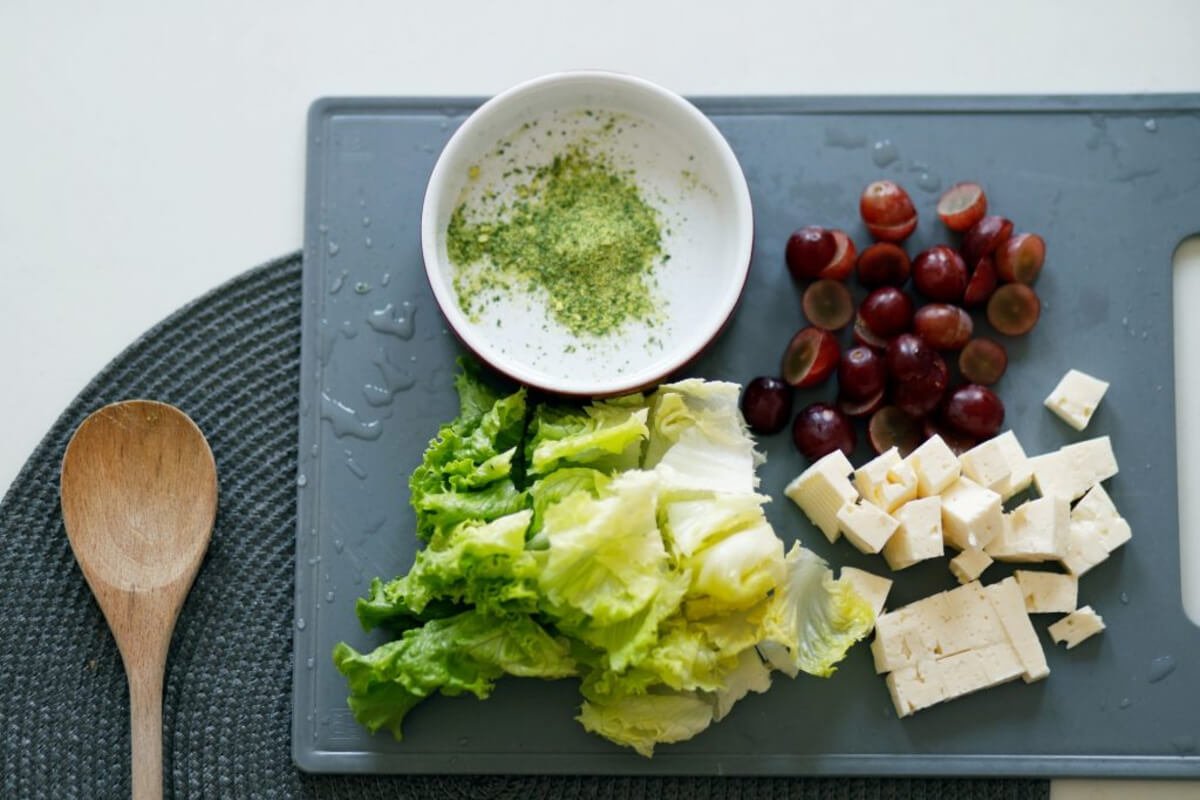Tofu,Tempeh & Seitan: The Similarities, Differences & Benefits
Discover > Texas Home Cooking > Tofu,Tempeh & Seitan: The Similarities, Differences & Benefits
Vegan protein is a very sought-after food these days. With the vegan lifestyle becoming more popular among health enthusiasts, more meat eaters are biting the bait and choosing vegan proteins sources. But from time to time, they do find themselves craving something, “meaty”. Here is where alt-meat options come into play. Umami flavored meat substitutes like tofu (how long does tofu last?) tempeh (how long does tempeh last?) and seitan (What wine goes well with seitan?) are lifesavers in satisfying that urge.
Now if you're having questions like; which one is which, what are they best paired with, which is a suitable choice for you and how do you cook with them, here is a breakdown of these plant based proteins or vegan proteins sources.
Vegan Protein Sources
Tempeh
A traditional plant-based protein from Indonesia, tempeh (What wine goes well with tempeh?) is a fermented soybean cake. It is said to have been discovered by accident in the islands of Java when discarded soybeans (how long do soybeans last?) were found to be edible, despite a layer of white mold growing on them! It is one of the meat alternatives for vegans widely used as a staple food in Indonesia where sometimes it is over-fermented to give a soft cottage cheese (how long does cottage cheese last?)-like texture and flavor.
Whole soybeans are fermented and set into a firm, dense, and chewy pack. Fermentation in tempeh is carried out by a fungi called rhizopus oligosporus. In controlled, warm temperatures, the mold on the soybeans grows and solidifies the whole beans into a dense cake. This process takes about 48 hours after which it is pasteurized and cooked.
This vegan protein source has a firm, chunky texture and while it commonly tastes bland, it does have mushroomy undertones that give it a savory meatiness. It does not contain any salt and really absorbs the flavors that it is cooked in.
How Do You Prepare Tempeh?
Tempeh can be cut into strips, cube sheets, or even ground to give a minced beef alternative. I have even grated tempeh once to give me a quick Taco filling meat substitute. Tempeh also works wonderfully for grilling, as it does not fall apart easily under heat.
Where Can You Find Tempeh?
Natural stores, health food stores, and even well-stocked grocery stores carry tempeh. You can also check out The flying tempeh brothers in Austin who are our local Texan tempeh makers. Always buy tempeh that is fresh with a reasonable expiration date. It shouldn't have any black or green molds on the surface and should ideally look more or less like a beige and white cake. Of course, there is also the homemade tempeh, but that's for another day.
Best Ways to Enjoy Tempeh
Old-school ways include Cuban fried tempeh dunked in Indonesian sambal or kecap manis. In America, we like to marinate this vegan proteins source and either bake or grill it for sandwiches, Asian stir-fries or stews.
For spaghetti nights, pulse tempeh cubes in a food processor so you have a chunky beef texture. Saute the tempeh along with tomato puree, some spices, and herbs to make a delicious vegan spaghetti sauce.
Nutritional Benefits of Tempeh
As tempeh is made from whole legumes and is barely processed if at all, it retains plenty of nutrition and fiber. It is more gentler on the stomach because it is fermented, meaning the nutrients are easily absorbed by the body.
The nutritional profile for 3.5 ounces of tempeh are as follows:
Calories: 160
Carbs: 9 grams
Protein: 15 grams
Iron: 12% of RDI
Sodium: 9 milligrams
Manganese: 54% of RDI
Magnesium: 18% of RDI
Calcium: 9% of RDI
Phosphorus: 21% of RDI
Compared to tofu, tempeh provides more protein. It is also a good source of nondairy calcium.
Tofu
Tofu is that kid who is always invited to the party. Meaning, it is mostly what you hear when people talk about meat substitutes or meat alternatives for vegans. It is also often included in reviews about tempeh tofu vs seitan. There are different theories as to how tofu was discovered, but the most popular one of them is that it was discovered more than 2000 years back by a man from the Han dynasty in China.
What is Tofu Exactly?
Basically, tofu is another variation of soybeans. The process of making tofu is quite similar to that of cheesemaking. Firstly, soymilk is made from overnight-soaked soybeans. A coagulant, like magnesium chloride or calcium sulphate is then added which causes the soymilk to curdle. When you drain the soy curd and press ‘em into blocks, what do you get? TOFU!
Tofu made this way can be pressed further to remove more moisture. This gives you the variants available in the market, extra soft, soft, firm or extra firm.
While tempeh is fermented, tofu is not. The texture of Tempeh is of course firmer than tofu, which has a bit of a jiggle to it. This plant-based protein is a wonderful alternative to eggs as well.
Fun fact! The thin skin that forms when soy milk (how long does soy milk last?) is boiled in an open shallow pan is collected and dried into yellowish sheets called soymilk skin. This skin is basically soy protein lipid complex and is basically protein fats and moisture. Needless to say, tofu skin is enjoyed as a delicacy in many cultures.
How Do You Prepare Tofu?
Depending upon what you are cooking, you will have to pick your tofu. Some recipes ask for ‘regular tofu’, that just throws you off your game. Most of the times they are referring to medium to firm tofu.
For stir fries, pan frying and scrambles, stick to medium or firmer types because you want the tofu to hold its shape. For soups, desserts, or cheese substitutes, go for the soft or silken kind.
A common trick that you can try when the recipe calls for more firmer tofu than you have at hand is to weigh the tofu down. Place your sliced tofu on kitchen towels. Cover the top with towels too. Gently rest a cast iron pan over the cover tofu and let this rest for about an hour. This helps squeeze out excess moisture and gives you a sturdier component to cook with.
Where Can You Find Tofu?
Like tempeh and seitan, you will find this vegan protein source quite conveniently in most grocery stores and health food stores. Asian food stores carry it as well. Make sure the tofu you buy is fresh and the kind you are looking for. If your budget allows it, always purchase organic tofu to reduce your exposure to genetically modified soybeans.
Best Ways to Enjoy Tofu
Flash-frying tofu before you add it to the main dish is a great idea to get a nice crunchy outer layer on it. Heat oil on medium-high and transfer your tofu slices into the pan. Be careful not to disturb the tofu till you can see the edges turning brown. Flip the pieces over one time and fry the other side as well. Once they are done to your liking remove the tofu into kitchen towels to soak up any excess oil.
This sautéed tofu can be added to vegetable soups along with celery, carrots, zucchini, and onions. Or in a broth of miso to create miso soup.
Silken tofu goes perfectly into your morning smoothies to give you that daily dose of protein after your workout.
Actually, you do not even have to cook tofu. It is ready to be eaten right out of the package. You can make a sandwich out of sliced smoked uncooked tofu and some veggies.
Nutritional Benefits of Tofu
This vegan proteins source protein many Phytochemicals that are anti-inflammatory in nature. It is also a good source of complete protein that means it contains all the essential amino acids in addition to iron, magnesium, copper and manganese.
Soybeans contain plant compounds called isoflavones that function as phytoestrogens in our body. This means that they can activate estrogen receptors in our endocrine system. But this effect is quite weak with tofu containing 20.2 to 24.7 mg of isoflavones in every 100 grams serving.
The nutritional profile of 3.5 ounces of tofu are as follows:
Protein: 8 grams
Fat: 4 grams
Carbs: 2 grams
Manganese: 31% of the RDI
Calcium: 20% of the RDI
Selenium: 14% of the RDI
Copper: 11% of the RDI
Seitan
Seitan is a relatively new term coined for a plant-based protein that is centuries old. Made from wheat protein, which is gluten, Seitan is an Asian diet staple for many years now. Like tofu, seitan arrived in the United States by way of China. Used popularly as a meat alternative for vegans, seitan is quite different from tofu and tempeh for the main reason that it is not made from soy. So for vegans with a soy allergy, this can be the best choice.
What is Seitan Exactly?
Wheat protein separated from the starch gives you Seitan and it is quite easy to make at home. For those who are not gluten sensitive and do not suffer from celiac disease, seitan can be quite delicious to have. The wheat protein and gluten is what give bread its elasticky, stretchy texture. When the gluten is isolated from the starch and bran, you are left with a dense dough that is quite a meat like.
Much similar to tofu and tempeh, seitan absorbs the flavors it is cooked in. Season it like meat, and that’s it.
How to Prepare Seitan?
Many home cooks that often compare tempeh tofu vs seitan enjoy preparing seitan at home from scratch. All you need is vital wheat gluten from any health store in a powdered form. One cup of vital wheat gluten to 1/4 cup of soy flour (how long does soy flour last?) or chickpea flour (how long does chickpea flour last?) makes a smooth final product that is not tough. Add a cup of water to the dry mix and form a dough. The next step is very important. Knead the dough for a good five minutes and you will find the strands of gluten starting to develop.
Once you are at this stage, let it rest for five to seven minutes. The seitan dough is like a shape shifter honestly, you can form it into smaller kofta sized balls, or flatten them a little to make a disc, or cube them like tofu. It is best to keep them in bite sized pieces, as the seitan absorbs water from the sauce and doubles in size.
Where Can You Find Seitan?
Like tofu and tempeh, you can conveniently find seitan in most Asian food stores. Or in leading food stores in the vegan aisles. Premade seitan is sold in different shapes command blocks or strips. If you can, always buy organic seitan to avoid a product that is too processed.
Best Ways to Enjoy Seitan
This meat substitute is very versatile. You can make noodles, Nuggets, burger patties, or even drumsticks out of it! Cook it into a delicious Mongolian beef stir fry or even cook some vegan steak with it! It all depends on the way you prepare the dish surrounding seitan.
Nutritional Profile Of Seitan
Seitan is known to have more protein than other vegan proteins sources. For 100 grams of seitan, you get 22 grams of protein, whereas 100 grams of tofu will give you only 7 grams of protein. In that sense, seitan is way up there.
However, it is not a complete protein, meaning it lacks some essential amino acids; specifically, lysine and threonine. This won’t be much of an issue since you can easily make up for this loss by pairing seitan with other foods to help balance the supply of EAA to our bodies.
Seitan is also a low carb option compared to the other two, as most of the carbs are washed away during the processing stage.
There are so many vegan protein options or vegan proteins sources these days really, from barbequed tempeh to tofu pies and seitan duck (What wine goes well with duck?) noodles, any dish can be prepared without animal protein and you won’t even feel the difference or try to compare tempeh tofu vs seitan.
Want to make teriyaki tofu and other sheet pan dinner ideas? Check here to learn how, and some tips on using sheet pans as your new go-to cooking tool.







